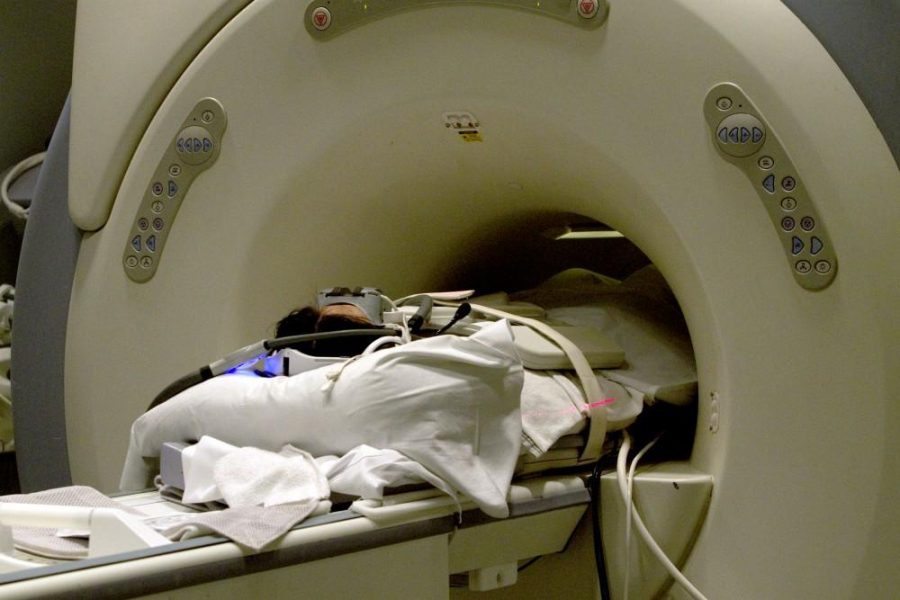Patients at the University of Arizona Medical Center may start enjoying MRI exams more, as the center has started to let patients use special goggles that play movies.
Resonance Technology Inc. provides patients with “CinemaVision” goggles to make an MRI exam a more positive scanning experience. With a 2-inch LCD screen that can play a movie or a television show, patients can now ease their nerves during a long, intimidating MRI screening that requires some to sit still for up to an hour.
The goggles include a headset and a microphone command that enables two-way communication between the patient and the technologist. The headsets are built with a noise cancellation system that blocks out the machine noise, said Scott Squire, a senior MRI research specialist.
Before the center started using these goggles, most patients took a sedation drug that helped them fall asleep, which has its own health risks. With goggles, patients feel less isolated and confined, Squire said. The goggles pose no risk or effect to the imaging for the machines, he added.
Mokhtar Ziarati, founder and CEO of Resonance Technology Inc., noticed that a lot of patients who are claustrophobic needed to be sedated upon entering the MRI, said Susana Montero, the company’s marketing director.
As an electrical engineer, Ziarati worked on fixing the MRI machines when he came up with the idea for “CinemaVision” goggles, which would help patients control their nerves without being drugged before an MRI exam, Montero said. The idea began with an audio concept that later included a video system, she added.
Through the goggles, patients can watch shows, movies or simply listen to the radio to calm their nerves in a claustrophobic situation, said Lisa Morrison, manager of Tucson Medical Center radiology department. MRI exams can take an hour or two and, with the goggles, patients can easily pass the time without continuously thinking about the machine’s loud noises or being isolated in a dark room.
“The main thing is that the person has to hold still and that is why we want to make sure that people were comfortable and not distracted,” Morrison added. “Because of the loud noise, especially if you’re in pain, it makes it harder.”
Although an MRI exam can be as short as 20 minutes, it can still be a daunting experience for younger children, said Bobby Kalb, an associate professor of radiology. These goggles can help ease children’s fear about going through the machine, he said.
In a parent testimony online, a man’s son was diagnosed with a brain tumor and was required to take various MRI screenings. He had to be sedated at the age of 7. With the use of the goggles, the man said his son was no longer afraid to enter the MRI machine as long as he was able to watch his favorite video.
A pair of the “CinemaVision” goggles cost about $40,000, said Dorothy Gilbertson-Dahdal, assistant professor of radiology and medical director of pediatric radiology.
The goggles are sold at such a high cost because they must be compatible with MRI machines, meaning they can’t have any metal in them, Dahdal said.
A special part about this design is that it makes it seem like patients are watching from a faraway screen, despite the fact that the screen is very close to their eyes, she said.
Many people appreciate the goggles and are grateful for them, Kalb said.









